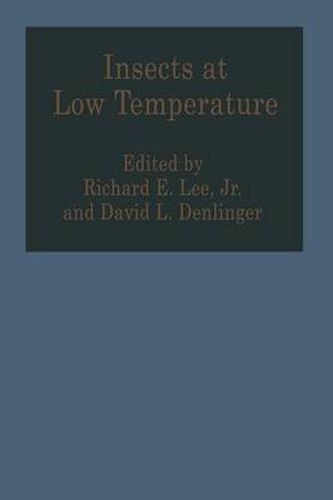Readings Newsletter
Become a Readings Member to make your shopping experience even easier.
Sign in or sign up for free!
You’re not far away from qualifying for FREE standard shipping within Australia
You’ve qualified for FREE standard shipping within Australia
The cart is loading…






This title is printed to order. This book may have been self-published. If so, we cannot guarantee the quality of the content. In the main most books will have gone through the editing process however some may not. We therefore suggest that you be aware of this before ordering this book. If in doubt check either the author or publisher’s details as we are unable to accept any returns unless they are faulty. Please contact us if you have any questions.
The study of insects at low temperature is a comparatively new field. Only recently has insect cryobiology begun to mature, as research moves from a descriptive approach to a search for underlying mechanisms at diverse levels of organization ranging from the gene and cell to ecological and evolutionary relationships. Knowledge of insect responses to low temperature is crucial for understanding the biology of insects living in seasonally varying habitats as well as in polar regions. It is not possible to precisely define low temperature. In the tropics exposure to 10-15 DegreesC may induce chill coma or death, whereas some insects in temperate and polar regions remain active and indeed even able to fly at O DegreesC or below. In contrast, for persons interested in cryopreservation, low temperature may mean storage in liquid nitrogen at - 196 DegreesC. In the last decade, interest in adaptations of invertebrates to low temperature has risen steadily. In part, this book had its origins in a symposium on this subject that was held at the annual meeting of the Entomological Society of America in Louisville, Kentucky, USA in December, 1988. However, the emergence and growth of this area has also been strongly influenced by an informal group of investigators who met in a series of symposia held in Oslo, Norway in 1982, in Victoria, British Columbia, Canada in 1985 and in Cambridge, England in 1988. Another is scheduled for Binghamton, New York, USA (1990).
$9.00 standard shipping within Australia
FREE standard shipping within Australia for orders over $100.00
Express & International shipping calculated at checkout
This title is printed to order. This book may have been self-published. If so, we cannot guarantee the quality of the content. In the main most books will have gone through the editing process however some may not. We therefore suggest that you be aware of this before ordering this book. If in doubt check either the author or publisher’s details as we are unable to accept any returns unless they are faulty. Please contact us if you have any questions.
The study of insects at low temperature is a comparatively new field. Only recently has insect cryobiology begun to mature, as research moves from a descriptive approach to a search for underlying mechanisms at diverse levels of organization ranging from the gene and cell to ecological and evolutionary relationships. Knowledge of insect responses to low temperature is crucial for understanding the biology of insects living in seasonally varying habitats as well as in polar regions. It is not possible to precisely define low temperature. In the tropics exposure to 10-15 DegreesC may induce chill coma or death, whereas some insects in temperate and polar regions remain active and indeed even able to fly at O DegreesC or below. In contrast, for persons interested in cryopreservation, low temperature may mean storage in liquid nitrogen at - 196 DegreesC. In the last decade, interest in adaptations of invertebrates to low temperature has risen steadily. In part, this book had its origins in a symposium on this subject that was held at the annual meeting of the Entomological Society of America in Louisville, Kentucky, USA in December, 1988. However, the emergence and growth of this area has also been strongly influenced by an informal group of investigators who met in a series of symposia held in Oslo, Norway in 1982, in Victoria, British Columbia, Canada in 1985 and in Cambridge, England in 1988. Another is scheduled for Binghamton, New York, USA (1990).